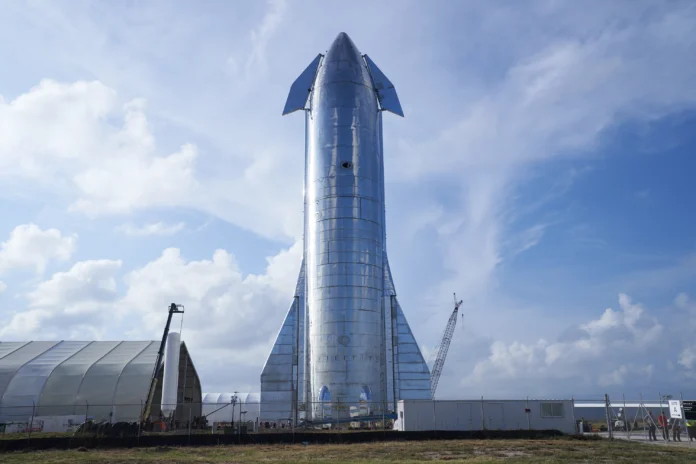The huge Starship rocket that will carry humans to Mars is being prepared for its orbital first test flight by SpaceX.
The enormous Starship rocket from SpaceX might soon enter space.
In fact, Booster 7 lit up fewer Raptor engines during the most recent engine test than it did during its previous static fire on November 14 when it lit up 14 of the incredibly potent engines.
However, Elon Musk’s statement soon after the last static fire shows that SpaceX is extremely close to carrying out the Starship’s first orbital test flight.
Several “hop” trials have so far been conducted on SpaceX’s fully reusable Starship rocket, during which it has soared to great heights and displayed amazing belly flop movements. The Starship rocket has experienced numerous landing crashes, but it has also experienced a few flawless landings.
Booster 7 completed a long-duration static fire test of 11 Raptor 2 engines on the orbital launch pad at Starbase pic.twitter.com/fFnKR00XNo
— SpaceX (@SpaceX) November 29, 2022
The following phase is to test Starship in orbit before launching the first crewed flight, which will send civilian astronauts from the Polaris Program into orbit. Elon Musk announced on Twitter shortly after the November 14 Booster 7 static fire that the company intended to do one or two additional static fire tests before making a “orbital launch attempt.”
It’s best to use caution when interpreting these statements because the orbital launch of the Starship has experienced numerous delays. However, static fire engine tests are often the final significant test before an orbital launch, so Starship’s big day can’t be too far off.

The strongest rocket in the entire globe will be Starship.
When Starship does go into orbit, it will probably use Booster 7 and Ship 24, a model for its 165-foot-tall (50-meter) upper stage that will also be adapted for NASA’s Artemis III mission’s lunar landing. Six Raptor engines are present aboard Ship 24 and have all been turned on for a separate static fire test on September 8.
When Starship does fly into orbit, it will surpass both SpaceX’s Falcon Heavy rocket and NASA’s Space Launch System, which launched the Artemis I mission on November 16 as the most potent rocket ever to ascend to the skies.
Starship was created to be completely reusable, unlike the other two rockets, in order to significantly reduce the cost of subsequent launches. If all goes according to plan, this decreased launch expense will also enable SpaceX and Elon Musk to finally accomplish their long-stated objective of delivering people to Mars and transforming humanity into a multi-planetary species.



